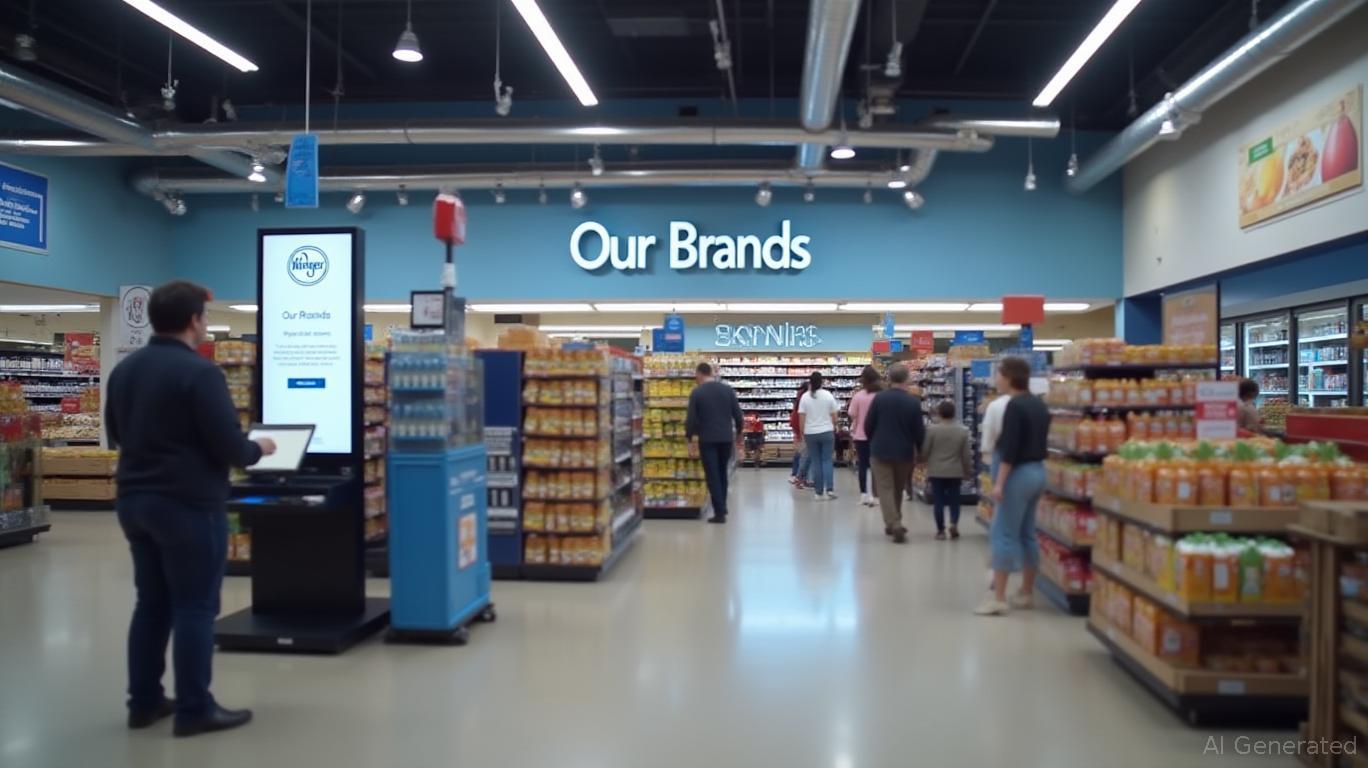Kroger's Strategic Pricing and Store Optimization: A Recipe for Inflation Resilience and Operational Excellence
In a retail landscape buffeted by inflationary headwinds and shifting consumer preferences,
(NYSE: KR) has positioned itself as a master of adaptation. Over the past year, the grocery giant has prioritized strategic pricing, operational discipline, and digital innovation to defend margins, retain customers, and prepare for a post-merger era. Let's unpack how these efforts could cement Kroger's long-term growth—and why investors should pay attention.
Pricing Strategies: Balancing Competitiveness and Profitability
Kroger's pricing playbook is a study in balancing altruism and self-interest. By lowering prices and rolling out personalized promotions, the company aims to attract cost-conscious shoppers while building loyalty. This approach isn't just about discounts; it's about owning the customer relationship. For instance, Kroger's “Our Brands” private labels now account for a significant chunk of gross margin improvements, thanks to their higher margins and consistent demand.
The data speaks to this strategy's success:
-
- Private labels and sourcing efficiencies offset rising price investments, proving Kroger can compete on price without sacrificing profitability.
Operational Efficiency: Where the Rubber Meets the Road
Behind the scenes, Kroger's operational discipline is the unsung hero of its resilience. The company has made $2.4 billion in wage investments since 2018, boosting associate hourly wages to nearly $19 (including benefits). While this may sound costly, it's a calculated move: happier employees mean lower turnover, better service, and higher customer retention.
Meanwhile, Kroger's digital transformation is paying dividends:
-
- Delivery sales surged 24%, fueled by Kroger's Boost platform and fulfillment centers, which now serve 95% of the U.S. population.
Yet challenges linger. Shrinkage (inventory loss) rose slightly, hinting at room for improvement in supply chain oversight. Still, Kroger's focus on store-level optimization—from layout redesigns to self-checkout expansion—suggests it's addressing these gaps.
Inflation Resilience: LIFO Winds at Their Back
Inflation's impact on Kroger has been mitigated by a key financial tailwind: LIFO accounting. Lower product cost inflation in 2023 flipped LIFO from a $234 million Q4 2022 charge to an $18 million Q4 2023 credit. This one-time boost isn't sustainable, but it highlights Kroger's ability to navigate volatile costs through sourcing and supply chain efficiencies.
2024: Deleveraging, Dividends, and the Albertsons Wild Card
Kroger's 2024 priorities are clear:
1. Debt Reduction: Postponing share buybacks to pay down debt (currently at a net 1.33x EBITDA ratio, below its 2.30–2.50 target).
2. Dividend Growth: Maintaining payouts, with plans to increase them over time—a comfort for income-focused investors.
3. Sustainability: Expanding its Zero Hunger | Zero Waste initiative, which aligns with ESG trends and customer expectations.
The Albertsons merger looms large, though. Regulatory hurdles and integration costs could delay synergies, but Kroger's focus on operational rigor may help it weather the storm.
Investment Takeaways: A Patient Play for Long-Term Value
Kroger isn't a high-flying growth stock, but it's a defensive bet in a turbulent retail sector. Its strengths—digital adoption, margin management, and customer loyalty—are underappreciated by the market.
Key Risks to Monitor:
- Merger Uncertainty: Delays could strain capital allocation priorities.
- Labor Costs: Wage inflation remains a wildcard if economic pressures ease.
- Inflation Volatility: A sudden spike in product costs could retest LIFO's benefits.
Investment Advice:
- Hold for the long term: Kroger's valuation (P/E ~14x 2024 estimates) reflects near-term risks but leaves room for upside as synergies materialize.
- Watch the debt ratio: A return to its 2.30–2.50 target would signal financial discipline.
- Digital adoption rates: If delivery growth continues, Kroger could leapfrog peers in convenience-driven retail.
Final Word
Kroger's blend of price discipline, operational grit, and digital innovation isn't flashy, but it's a recipe for survival—and growth—in a tough environment. While risks remain, the company's focus on customer retention and cost control suggests it's ready to thrive when the macro tide turns. For investors willing to look past short-term noise, Kroger could be a sturdy anchor in a volatile portfolio.

Comments
No comments yet